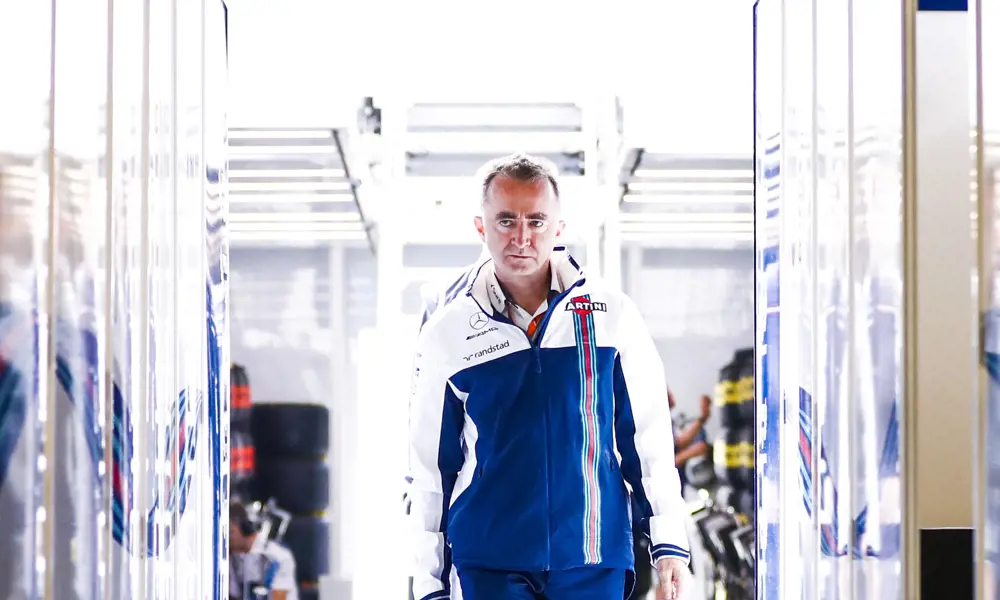
A formula for success
When Paddy Lowe FREng started thinking about a career in motor racing, his first task was to find someone to send his job application to. Back in 1987, racing teams were not the household names that they have become, and there was no internet to search for contact details. Formula One (F1) motor racing had yet to achieve its global prominence or wealth, and engineering graduates were thin on the ground, which probably explains why only one of the three racing teams Lowe wrote to bothered to reply to a letter from the young Cambridge graduate. By coincidence, Williams, the company that did answer Lowe’s letter, was near to the Oxfordshire site where he worked in the research and development (R&D) department of Metal Box, developing packaging machines. Today, Lowe runs Williams’ engineering as Chief Technology Officer, and is one of the few engineers on the board of a motor racing business.
Today, Lowe runs Williams’ engineering as Chief Technology Officer, and is one of the few engineers on the board of a motor racing business
In 1987, when Lowe first contemplated motor racing as a career, the Williams team had won the season’s F1 title, which it had achieved without much sustained engineering input. Graduate engineers were scarce in motor sport at the time and when looking for staff, Williams thought it needed more technicians. Lowe and Steve Wise, another young engineer who had contacted Williams, convinced Frank Dernie, then head of the team’s R&D, that engineers, especially electronic engineers, might bring something to motor racing. They quickly proved the point. As joint heads of electronics, Lowe and Wise used their experience in control engineering to introduce electronically controlled suspension to F1. This engineering breakthrough helped Nigel Mansell win the F1 World Drivers’ Championship in 1992.
Lowe fuelled the success by tapping into his work on packaging machinery, a world that might have seemed far removed from F1. At Metal Box, he had begun to develop an expertise in control engineering, an interest that started when he worked for the company on a gap year between school and university. Metal Box, which developed packaging machines for plastics and tin cans, sponsored a sandwich course so that Lowe could study engineering at the University of Cambridge.
Learning to be an engineeer
Lowe confesses that he did not really know what an engineer was when he was at school. Like many people, he originally chose engineering partly because he liked to take things apart. With his brother Michael, five years his senior, he dismantled various engines and bicycles. Michael studied civil engineering at the University of Edinburgh before becoming a professor of mechanical engineering at Imperial College London, and is also a Fellow of the Royal Academy of Engineering. The Lowes are the only brothers who are Academy Fellows. “My mother is very proud of that,” he laughs.
Lowe followed in his brother’s engineering footsteps, but opted for a general degree course. When it came to picking final-year options for his degree, he drew on his time at Metal Box and chose control engineering. After graduating and a gap year sailing the Atlantic on a 12-metre boat, he moved back into R&D at Metal Box to work on real control engineering, a subject that Lowe still describes with enthusiasm. “You go and make things work. You close the loop.” This all happened with some primitive electronics. “We were controlling things with eight-bit microcontrollers, or 16-bits if you were really lucky.”
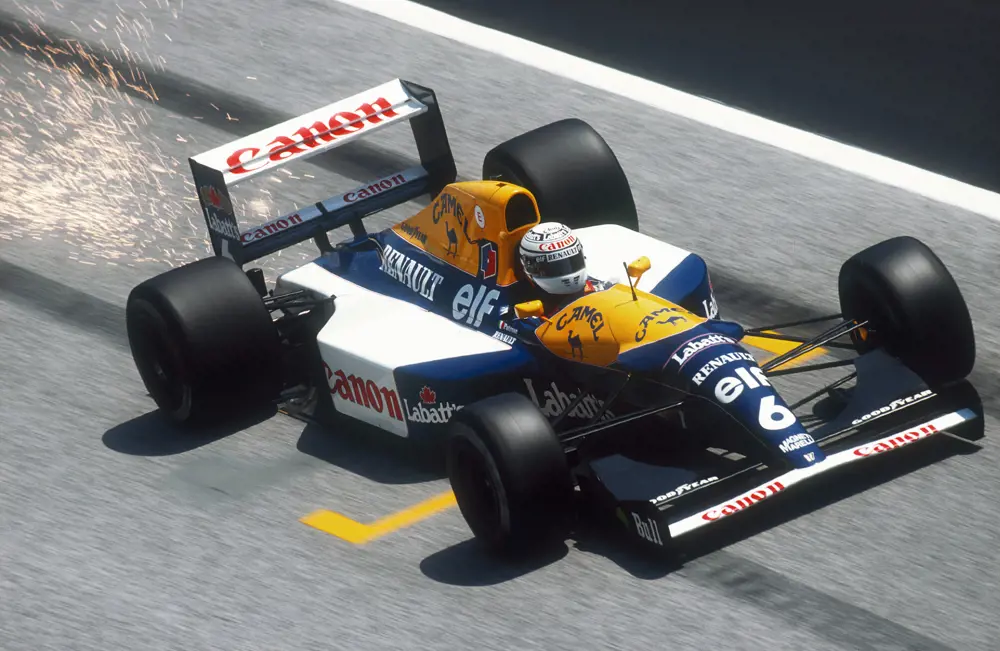
Nigel Mansell won the 1992 Formula One World Drivers’ Championship in the Williams FW14B racing car. The car changed the shape of motor sport with its introduction of active suspension and traction control, two new technologies that Paddy Lowe helped to develop with expertise on control engineering that he brought to the team from his work on packaging machinery © Williams Grand Prix Engineering Limited
Packaging machinery might not seem exciting but it can push technology to its limits. The margins are so low that the business willingly invested a lot to keep production costs down. For Lowe, this was a way to get into electronic control systems and their use in complex engineering systems.
Lowe quickly discovered that in some areas of engineering, packaging was ahead of F1. When Lowe joined Williams in 1987, he jokes, F1 was something of a “couple of blokes in a shed” operation. “Back then there were few people in the industry who had an engineering degree; most were self-taught. It wasn’t an industry that would have appeared in the careers office.” But that shortage of technical expertise meant that Lowe and Wise could bring their knowledge of electronics to a world that had previously been predominantly mechanical.
When Lowe joined Williams in 1987, he jokes, F1 was something of a “couple of blokes in a shed” operation. “Back then there were few people in the industry who had an engineering degree; most were self-taught...”
Lowe explains that, when they joined Williams, mechanical designers were devising new cars. “It was a very mechanical car,” he says. “The only real electronics were from the engine side.” That was down to Honda, which built the engines. “They were controlling the engine electronically, but there was nothing on the chassis. Anything to do with electronics, software or control, we started from scratch.” They started with active suspension. “We got into things such as automatic gearshift. Then we did traction control and automatic race starts, so that includes automatic clutch control, active differentials, anti-lock brakes and so on.”
A place for ideas
It turned out that the F1 rules of the 1980s gave engineers a free hand in the technologies that they could deploy, but no-one had taken up the opportunities. Rules, Lowe explains, are the essence of motor sport. It is called F1 for a reason. “It is because there is a set of regulations. That is the formula.” In the 1980s, the regulations set by the rule-making body, the Fédération Internationale de l’Automobile (FIA), were not very restrictive. “We had not exploited available technology within the regulations that existed. We were nowhere near the level of technology applied in other industries.”
Rules, Lowe explains, are the essence of motor sport. It is called F1 for a reason. “It is because there is a set of regulations. That is the formula.”
The door was wide open for engineers with ideas. “In those first few years that I was at Williams, it was a bit like the Wild West. You could come in with an idea and you could go and just deliver it without any worry about regulatory limits.” Lowe and his colleagues could spend a couple of weeks in the workshop and roll out a technology that they could try on a car immediately.
The development of active suspension illustrates what engineers could do with the freedom to innovate. Williams had been thinking about the idea before Wise and Lowe joined the team, but with them on board it could develop the idea further. Within a few years, the Williams team hit a winning streak when Nigel Mansell won the 1992 championship in the FW14B – “one of the more notable cars in F1 history,” says Lowe. “That car was quick because it had active suspension and traction control.” At the time, no other car had that.
Lowe still seems surprised by the gains that these engineering innovations delivered. “The traction control added one second a lap. The active suspension added about one second a lap, so we were basically two seconds a lap quicker than everyone else.” Talk of seconds may seem like small gains, but that is far from the case. These days, says Lowe, when they come up with new ideas, F1 teams measure gains by the milliseconds they cut from lap times. For example, there was a big battle between Ferrari and Mercedes in the 2017 F1 series. “Those cars were trading places around one or two tenths of a second of difference.”
Talk of seconds may seem like small gains, but that is far from the case. These days, says Lowe, when they come up with new ideas, F1 teams measure gains by the milliseconds they cut from lap times
With such small leaps in performance can F1 still be fun? “Absolutely,” Lowe says “There are always new challenges. I have enjoyed every year more and more.” It helps that Lowe now has a bigger role. He started off, as he puts it, “in the weeds of engineering, whereas now I have a much wider scope”. The new challenge for Lowe is to do for Williams what he has done with other teams. Like drivers, engineers sometimes move between teams during their careers. Lowe was at Williams between 1987 and 1993, then he moved to McLaren Racing as Head of Vehicle Technology. After filling several roles with that team, he moved to Mercedes in 2013 as Executive Director (Technical) for four years until the call to return to Williams came in 2017.
What prompted the move? At Mercedes, Lowe had overseen three consecutive Drivers’ Championships and three consecutive Constructors’ Championships, a measure of the performance of key elements in a team. In contrast, after dominating the sport in the 1980s and 1990s, in recent years, Williams had rarely made the winners’ podium. “It was just a great opportunity for me to come in at a senior level and to see if I could help bring the team back to the front of the grid.”
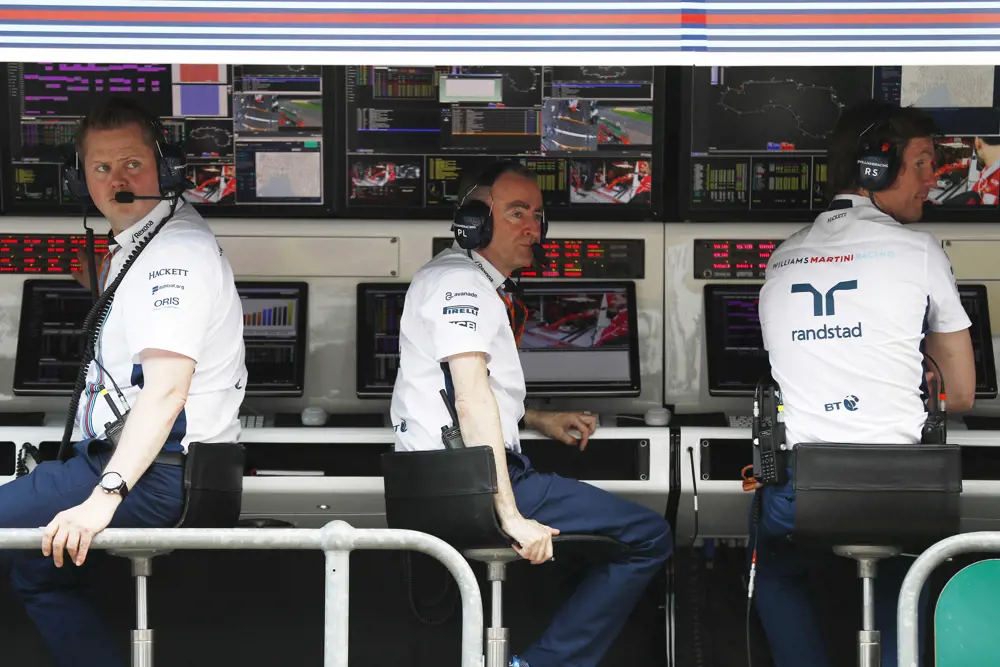
As head of technology at Williams F1 racing, Paddy Lowe (centre) is in the pits on race day, analysing the cars’ telemetry data, choreographing what goes on in the team’s two cars, and looking for possible improvements for future races and the next season’s cars © Williams Grand Prix Engineering Limited
Making a return
Lowe rejoined a team with many more engineers and a brilliant fanbase. Williams now operates on a modern campus. As Chief Technology Officer, Lowe runs engineering at Williams F1, which employs around 650 staff, plus another 250 people at Williams Advanced Engineering. The group also includes a conference centre and museum of historic cars. Within the F1 team, separate groups cover different aspects of engineering. “The biggest performance area for the team is aerodynamic performance,” says Lowe. A technology department in its own right, the aerodynamics engineers run a wind tunnel and have a high-powered computer for computational fluid dynamics (CFD). “The output from the aerodynamics department is a set of surfaces, which they have defined using their toolsets, the tunnel and the CFD.” Most F1 teams buy in engines, and in Williams’s case they come from Mercedes. However, teams typically design their own chassis and gearbox. This all feeds into the design of each season’s new cars.
When it comes to race season, the pit team is a mix of about 50 engineers and technicians. “The technicians do the logistics and build the cars: the engineers are there to exploit a car to be the best,” says Lowe. “We have a lot of experts on different topics. Tyres, aerodynamics, brakes – all have their specialists, along with engineers who monitor the mass of data gathered from the cars’ electronics.”
We have a lot of experts on different topics. Tyres, aerodynamics, brakes – all have their specialists, along with engineers who monitor the mass of data gathered from the cars’ electronics
Lowe’s job as Chief Technical Officer is to tie everything together, as well as the all-important task of determining the race strategy. “What tyres will you put on? What do you want each driver to do? You have to choreograph what you want to do with the cars. The pit stop is a great example of that,” he says. “The actual execution of the pit stop is a very technical process as well as an interesting team process.” On top of that, Lowe looks for lessons to take home to improve performance before the next race. “You are working across multiple time frames. You are trying to optimise what you have on the day, but you are always looking to what you can bring to the next race. Then also what can you bring to next year.” This is why TV viewers see Lowe in coverage of F1 races with his headset on, scrutinising monitors as they collect data from the cars.
The only respite is in August, partly for the sake of family life, when the teams observe a self-imposed moratorium for two weeks. “No email, nothing,” Lowe says. “It works really well. It is probably one of the best rules that we came up with!”
Teams spend a lot of time on the road. The race season has grown and now runs from March to November. There are usually races every other weekend, along with two or three ‘double headers’ with races on consecutive weekends. The 2018 season has the first triple header, with races three weeks running. The only respite is in August, partly for the sake of family life, when the teams observe a self-imposed moratorium for two weeks. “No email, nothing,” Lowe says. “It works really well. It is probably one of the best rules that we came up with!”
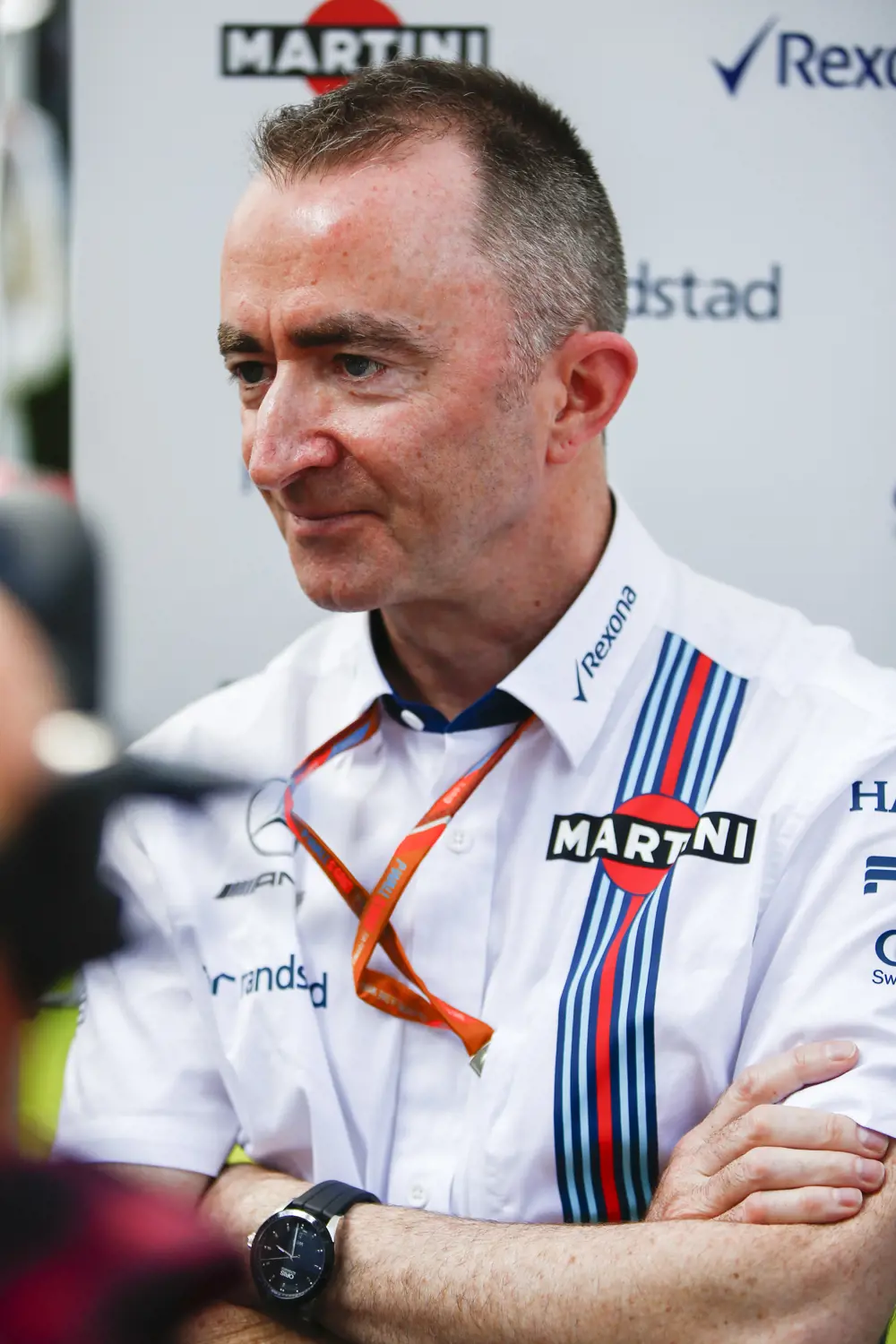
With more than 44,000 Twitter followers, Paddy Lowe is one of the UK’s most visible engineers © Williams Grand Prix Engineering Limited
Formula One of the future
Those FIA rules, which Lowe has helped to set for some years, provide F1 teams with a moving target. “The rulebook is an awful lot thicker and you very rarely find a new opportunity within the regulations where the engineering has not yet been pushed to the limit. Today, we are operating at the limits of the rulebook and the limits of technology, compared to 30 years ago when we were operating at the limits of our capacity and capability.” The engineering in F1 is now also far more objective, he adds. “It is based upon the use of sophisticated analysis and simulation tools. We used to just guess at performance. Now we can calculate what we are going to gain from any particular prospective design or candidate design.”
In 2014, another change in the formula that appealed to Lowe was the requirement in the F1 rulebook that mandated hybrid engines for cars. Lowe was running technology at Mercedes when this happened and oversaw the team’s move to hybrid engines. “These V6 engines are now around 50% thermally efficient,” he says. Thermal efficiency is an important aspect that modern engine builders must consider. It is calculated on the amount of useful energy that can be produced from the heat supplied to the engine, without having to recover energy under braking. Lowe says that it is “incedible” that the hybrid engines are delivering 50% thermal efficiency at constant speed.
The new formula set out to encourage fuel efficiency. F1 cars are limited to 100 kilograms of fuel an hour. “Clearly, the more power you can make from your 100 kilos an hour, the quicker you will go.” This is also an efficiency measure. “In 2014, our engine was about 45% efficient, so you can see that, in three or four years, the regulations have driven us within F1 – using our technology, our capacity, resourcefulness and a motivation to win – to increase thermal efficiency of a combustion engine from 45% to 50%. They didn’t manage that in the previous 100 years of automotive industry.”
in three or four years, the regulations have driven us within F1 – using our technology, our capacity, resourcefulness and a motivation to win – to increase thermal efficiency of a combustion engine from 45% to 50%. They didn’t manage that in the previous 100 years of automotive industry
Lowe does not claim that F1 is a test bed for technologies that can end up in showroom vehicles. “If you dive into that engine and ask yourself how much of it applies to a road car, you might find maybe not all that much. But the point is that we have shown the industry that you can get 50%, maybe not using exactly the same methods that we have used, but you know that that is a good direction.” Then there is the effect on the millions who watch F1 on television. “You make the hybrid engine more of an aspirational technology rather than something quite dull, which it might have been before.”
There are other ways in which F1 can benefit engineering in general. For example, the work in wind tunnels can deliver technologies that can apply not just outside F1, but outside motoring. The group created Williams Advanced Engineering for exactly that purpose. “It makes use of technology and skills that we have developed for our F1 programme, applying it to other industries.” One such development, carried out with another startup business, Aerofoil Energy, takes the company’s understanding of aerodynamics and expertise in CFD to develop aerofoil systems that keep cool air inside a supermarket’s refrigerator cabinet, delivering significant energy savings.
Nearer to the car market, Lowe is enthusiastic about the work that Williams Advanced Engineering is doing on electric vehicles. “We build electric vehicle prototypes for several large automotive companies.” Car companies can also buy into the company’s FW-EVX ‘platform concept’ for electric vehicles. The electric vehicle technology includes innovations in battery pack design, cooling systems and lightweight structures, all brought together into a single platform that car makers can adapt to meet their own needs. This takes in the expertise of the F1 engineers in aerodynamics, electric systems, advanced lightweight structures and vehicle integration.
One area where the new business has already made a significant impact is in batteries for electric vehicles. “I think that electric cars are coming quicker than anybody thinks,” says Lowe. They are even making their mark on race tracks, in the shape of the Formula E series, an electric version of F1. “We build all of the batteries for Formula E,” says Lowe. “We run a Formula E team on behalf of Jaguar.”
Lowe highlights the importance of the engineers’ ability to tackle batteries at the systems level. “It is one thing to build batteries, but then to build an effective battery management system and a thermal solution for batteries is where it gets difficult.” It is all very well demonstrating great performance in tests, but it does not mean much if everything gets so hot that it has to be left to cool down for a long time. “A Formula E car is being driven flat-out all the time. Formula E has been a very valuable exercise in improving what we can do and what needs to be done in that area.” Williams is also involved in the UK’s Faraday Battery Challenge, a multimillion pound R&D effort managed by Innovate UK and the Engineering and Physical Sciences Research Council.
A Formula E car is being driven flat-out all the time. Formula E has been a very valuable exercise in improving what we can do and what needs to be done in that area
Career timeline and distinctions
Born, 1962. Awarded a degree in engineering from the University of Cambridge, 1984. Worked in R&D at Metal Box, 1985–1987. Joint Head of Electronics, Williams, 1987–1993. Various roles at McLaren, including Head of Vehicle Technology, Chief Engineer Systems Development and Engineering Director, 1993–2013. Executive Director (Technical) at Mercedes, 2013–2017. Fellow of the Royal Academy of Engineering, 2015. Chief Technology Officer, Williams, 2017–2019. Consultant, PALAD Technology, 2019–present. Founder & Director, Zero Petroleum, 2020–present.
These moves to the frontiers of engineering are just one sign of how much has changed in Lowe’s 30 years with F1. It took a lot of money to make that transition. As a business, F1 has grown at compound annual growth rate of 8% to 10% in the sport’s income and spending. This is, says Lowe, an incredibly successful industry to have grown at that rate for a 30-year period.
The success of F1 is well understood in the engineering world, and it is held up as a sign of Britain’s engineering prowess. This explains why F1 now has no problem recruiting graduates. “We are fortunate in that we are able to attract very high-calibre recruits. You can work on a great technology, reasonably well-resourced and funded to do so. You see the results on TV every two weeks. It is tremendously rewarding.” Lowe would like to use that excitement to spread the word to a bigger audience. “If there were ways to leverage the excitement of F1 as an engineering destination, more effectively into schools, that would be great.”
Social networks play a part in Lowe’s efforts to spread the word about engineering. With more than 44,000 followers on Twitter, Lowe is one of the more visible engineers in the country, perhaps even globally. This visibility is understandable given Lowe’s role in, by the latest count, 158 race wins, seven Drivers’ Championship titles and five Constructors’ Championship titles. The enthusiasts are always looking for clues as to what is in store for the next racing season. The fans will be kept guessing until the season starts in March, with one report suggesting that fans can expect gradual change, while another tells them to look out for “substantial changes”. Lowe did give Ingenia some insights into the new cars: “We are doing a car that is quite different for next year than it was this year. We hope to be substantially quicker.” However, he did not volunteer how many milliseconds he hopes to shave off lap times.
***
This article has been adapted from "A formula for success", which originally appeared in the print edition of Ingenia 74 (March 2018).
Contributors
Michael Kenward OB
Author
Keep up-to-date with Ingenia for free
SubscribeRelated content
Mechanical
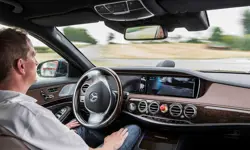
When will cars drive themselves?
There are many claims made about the progress of autonomous vehicles and their imminent arrival on UK roads. What progress has been made and how have measures that have already been implemented increased automation?
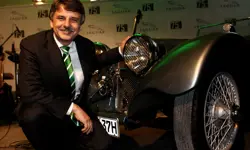
R&D investment makes good business sense
In just five years, Dr Ralf Speth FREng has presided over a revolution in design and manufacturing that has helped create a new family of engines and has overhauled Jaguar Land Rover (JLR) production facilities.

Bikes help improve skills and attitude
The Archway Project is an independently-funded scheme that is expanding its engineering-based programmes by providing BTEC certificates and diplomas. John Milton, the director of the project, explains what the charity does to help reduce anti-social behaviour and improve employment prospects.
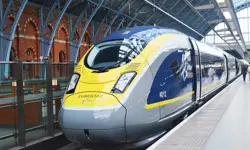
High speed evolution
In December 2010, Eurostar International Ltd awarded a contract for 10 new high speed trains to Siemens. The company has used a system developed over decades to maximise the performance and passenger-carrying ability of its 320km/h trains.
Other content from Ingenia
Quick read

- Environment & sustainability
- Opinion
A young engineer’s perspective on the good, the bad and the ugly of COP27

- Environment & sustainability
- Issue 95
How do we pay for net zero technologies?
Quick read

- Transport
- Mechanical
- How I got here
Electrifying trains and STEMAZING outreach

- Civil & structural
- Environment & sustainability
- Issue 95